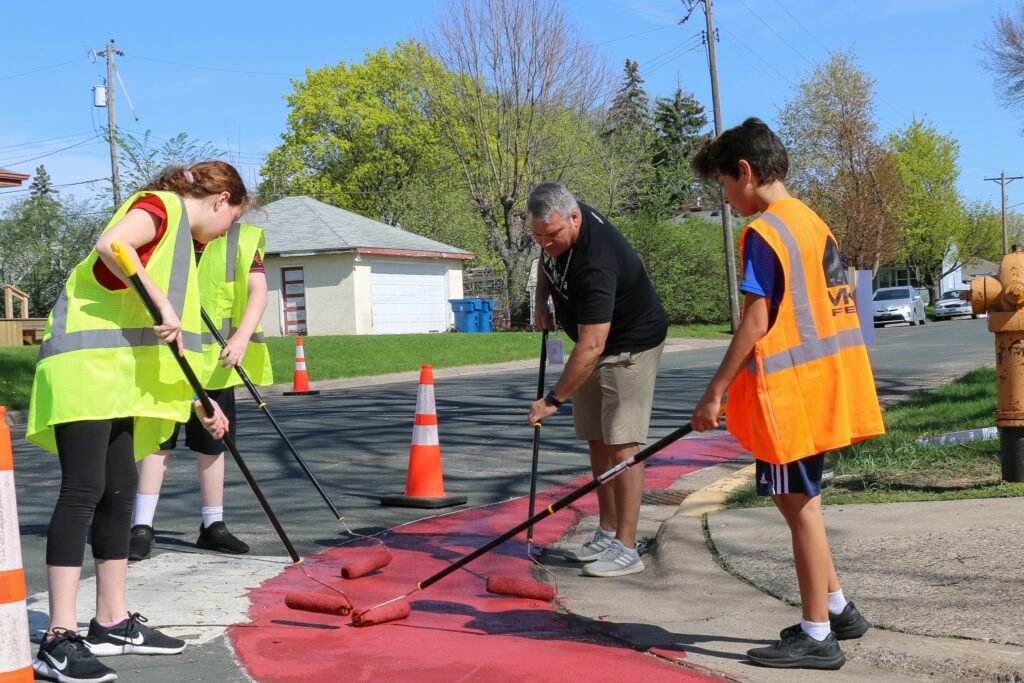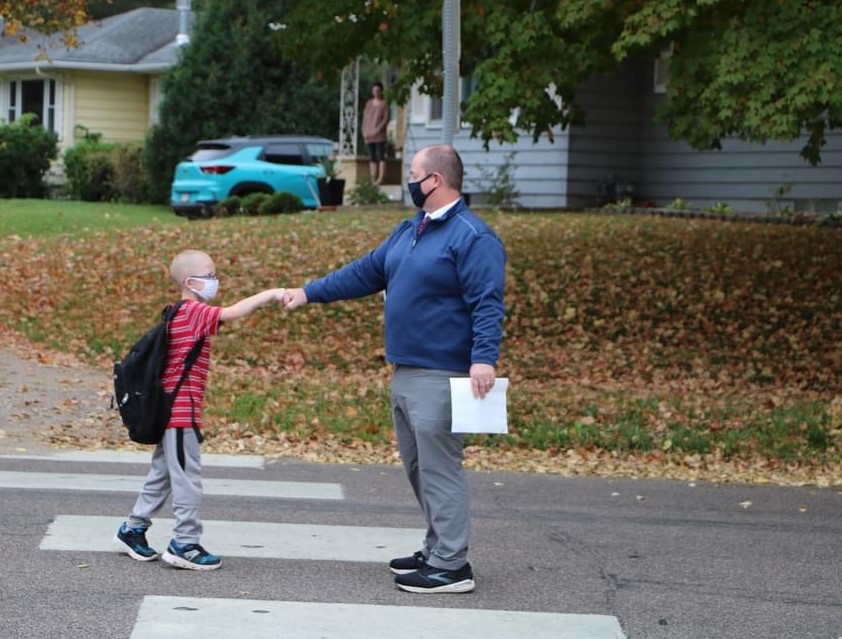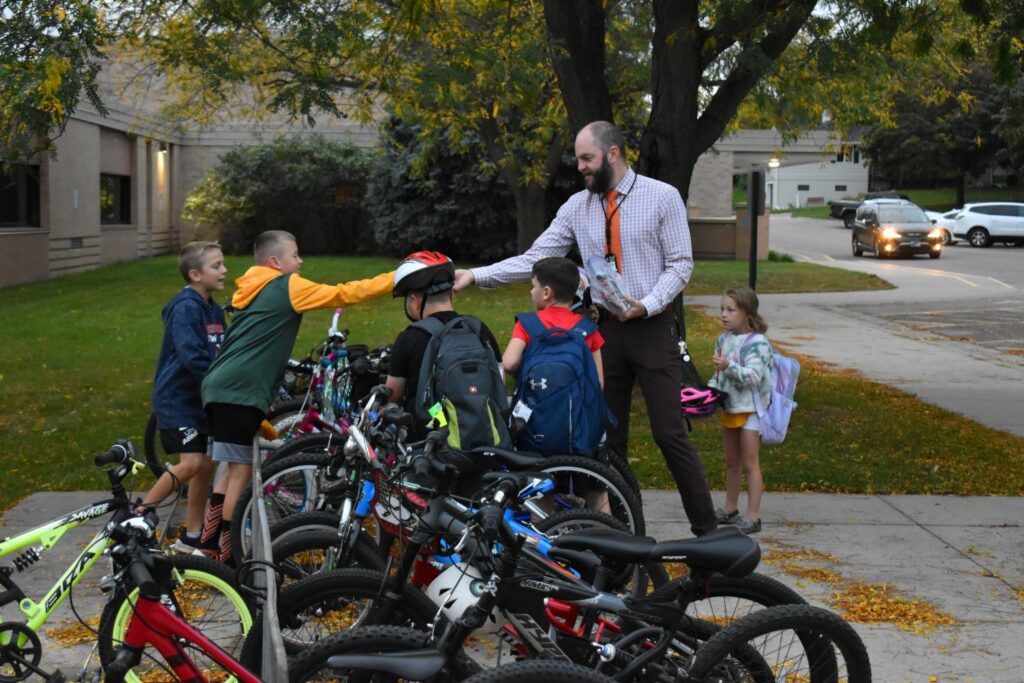Getting Started for Principals
As the leader of the school, the principal has a packed schedule and many responsibilities. The good news is being involved in SRTS does not need to take a lot of time. Below is a sample list, with several simple ways principals can make an impact:
- Designate a staff person to lead Safe Routes to School efforts
- Solicit a team of SRTS leaders and volunteers at your school to organize and program walking and biking events
- Add information on walking and biking to the school website
- Provide information on walking and biking at Back to School Night or in backpack mail at the start of each school year
- Deliver a motivational speech to participants on Walk or Bike to School Day
- Challenge students to walk and bicycle to school as often as possible
- Lead a walking and/or biking safety assembly
- Offer safety tips during morning announcements in the days leading up to a Safe Routes to School event
- Engage the parent teacher association (PTA) and inform them of the many benefits of SRTS and how they can help with the school’s program or events
- Encourage teachers to conduct walking- and biking-related activities in the classroom
- Send notes home to parents encouraging them to participate in the event
- Lead a walk or bike to school parade, walking school bus or bike train
- Judge a walking/biking safety poster contest .
In addition to the suggestions above, many policies and programs can be advanced at the school and district level to address concerns, improve safety and increase walking and biking to school. School leaders can shape how students travel to and from school and principals should consider being more involved in Safe Routes to School in the following ways:
- Convene and participate in a Safe Routes to School Team to identify and prioritize projects that get more students physically active by walking and bicycling.
- See the Stakeholders guide to learn more about who should be on the team.
- Ensure student transportation and arrival/dismissal policies support walking and bicycling.
- Find examples and guidance in the National Partnership’s Safe Routes to School Local Policy Guide.
- Conduct the national Safe Routes to School parent surveys and annual student tallies to understand how students travel to school and identify locations where safety improvements are needed. Visit saferoutesdata.org to access survey and tally forms.


